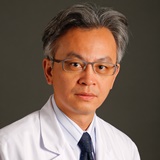Cheng Hsein Wu

Dr. Cheng-Hsien Wu is the chief of department of Oral & Maxillofacial Surgery, Taipei Veterans General Hospital and the associate professor at the School of Dentistry, National Yang Ming Chiao Tung University. He is also the council member of Taiwanese Association of Oral and Maxillofacial Surgeons and Asian Association of Oral and Maxillofacial Surgeons. Dr. Wu graduated DDS, and PhD from the National Yang Ming Chiao Tung University and completed training of OMFS in Taipei Veterans General Hospital. His clinical expertise are head and neck oncology, orthognathic surgery, facial trauma, and microvascular reconstructive surgery. Dr. Wu devotes to apply computer-assisted approach, eg. virtual surgical planning, surgical navigation, and 3D printing on the craniomaxillofacial operations. He received many national innovations award accordingly.
Management of the Cranio-Orbito-Zygomatic Deformities
The cranio-orbito-zygomatic (COZ) delta is a unique anatomic subsite that plays important role on supporting the orbit and sinonasal structures. Meanwhile, it is the essential part of the lateral projection of facial profile. Orbitozygomatic deformities are frequently a sequalae after traumatic injuries or oncological resection. How to restore the facial contour and function is the utmost treatment goal. However, the complex nature of the structures challenges the surgeon’s knowledge to anatomy, experience, and the perception toward surgical outcome. Furthermore, the COZ delta situated in the region, which is often neglected, and those patients are prone to be rotated between different specialties. As maxillofacial surgeons, our training background provides better understanding on the craniomaxillofacial structures, which is a new avenue to deal with the COZ delta. With the rapid development of digital technologies and computational algorithm, modeling / navigation techniques profoundly change the surgical practice in craniomaxillofacial surgeries. Volume rendering from different image sources allows the surgeon to analyze the patient in three-dimensional format and to manipulate deformed or missing facial structures by computational algorism such as mirroring, segmentation, or insertion of unaltered or ideal skeletal constructs. The execution of the virtual planning is then accomplished by using stereolithographic models (SLMs), implants, cutting guides, or through image-guided surgery in the form of intraoperative navigation. Precision and reduced operation time are the main benefits from using computer assisted approaches. When combing endoscope and remote surgical approaches, tumor resection and customized reconstruction could be done with minimal visible scar. The treatment flow has become a daily routine and a gold standard to optimize functional and cosmetic outcomes
